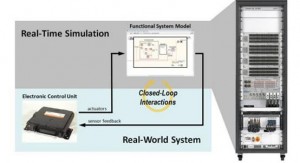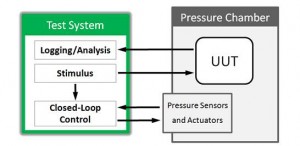HIL Testing and Pressure Chamber in Real-time Testing Applications
An ordinary real-time testing technique is to automatically operate a physical variable in the test system by using a closed-loop control, such as position, temperature, acceleration, or torque.
Real-time testing includes the use of a real-time environment to apply a test application. In order to achieve greater reliability or determinism in a test system, engineers usually use real-time testing techniques to realize it. These techniques also play a critical role in the development of today’s products and systems which need to operate for long durations, including durability, life-cycle, as well as which requires the low-jitter determinism of real-time execution platforms, including environmental test cells, dynamometers, hardware-in-the-loop (HIL) simulators, and similar test systems that use closed-loop control execution.
Below several real-time testing applications will be introduced to explain it.
HIL testing
The first one is HIL testing, a real-time testing application that is used to test the efficiency of electronic control systems. An electronic control system is combined by the electronic control unit (ECU) and the controlling system or environment. When testing it, many factors will influence the testing of the complete system such as the safety, system availability, and cost. However, the incomplete system will make it impossible for the closed-loop coupling between the ECU and the rest of the system to fully test the electronic control unit. HIL simulation is a real-time testing technique that uses a software model of the rest of the system to simulate the sensor and actuator interactions between the control unit being tested and the rest of the system. This creates a virtual environment for the ECU, preserving the closed-loop coupling within the system. To accurately simulate the sensor and actuator interactions, the test system must deterministically execute model calculations at consistent, or deterministic, time intervals.
A pressure chamber
When implementing an environmental test system such as a pressure chamber, the test chamber must achieve a specified state as well as providing stimulus to the unit under test (UUT) and monitoring its response. Because the chamber pressure is affected by many variables, such as chamber leakage or varying UUT characteristics, test engineers use a closed-loop control algorithm to monitor the value of a pressure sensor and automatically adjust the compressor and release valve command signals to follow the pressure profile specified by the test plan. To implement this automatic control, the closed-loop controller measures the state of the system and adjusts the commands applied to it at deterministic time intervals.


